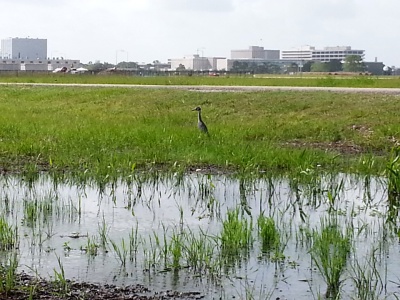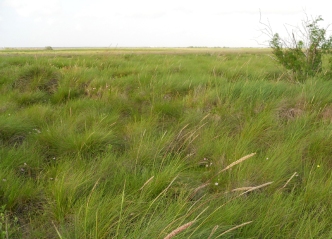Visiting the Johnson Space Center (JSC), you probably anticipate a vision of a high tech future in space. But to address a more down-to-earth aspect of the space center’s operation, Chris LaChance and I were invited to NASA by Sandy Parker of the JSC Environmental Office to consult on transforming a landscape problem area from boggy lawn to JSC’s first created wetland.
The JSC landscape maintenance contractor, Prodyn EPES, needed a way to deal with the water that pooled in a low spot between a weather station building, parking lots, and a jogging trail. It tended to be too wet to mow, so something else had to be done—and done on a tight budget. At about 2200 square feet, it was too large to be economically practical as a rain garden, which can sometimes require considerable excavation, an underdrain, porous soils, and a selection of predominantly nursery-raised native plants. Chris thought the site had more potential as a created wetland, so she brought me along on the mission.


